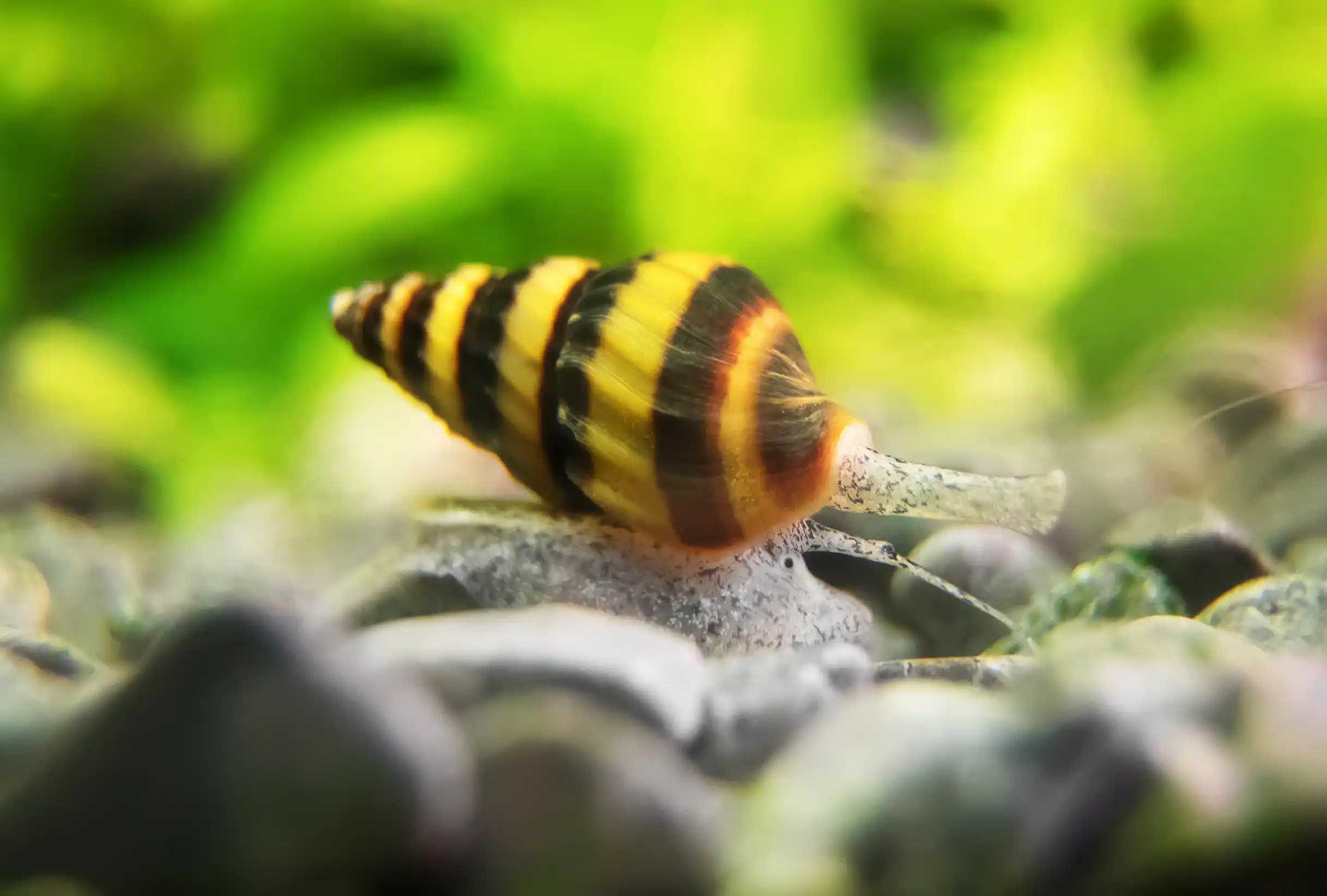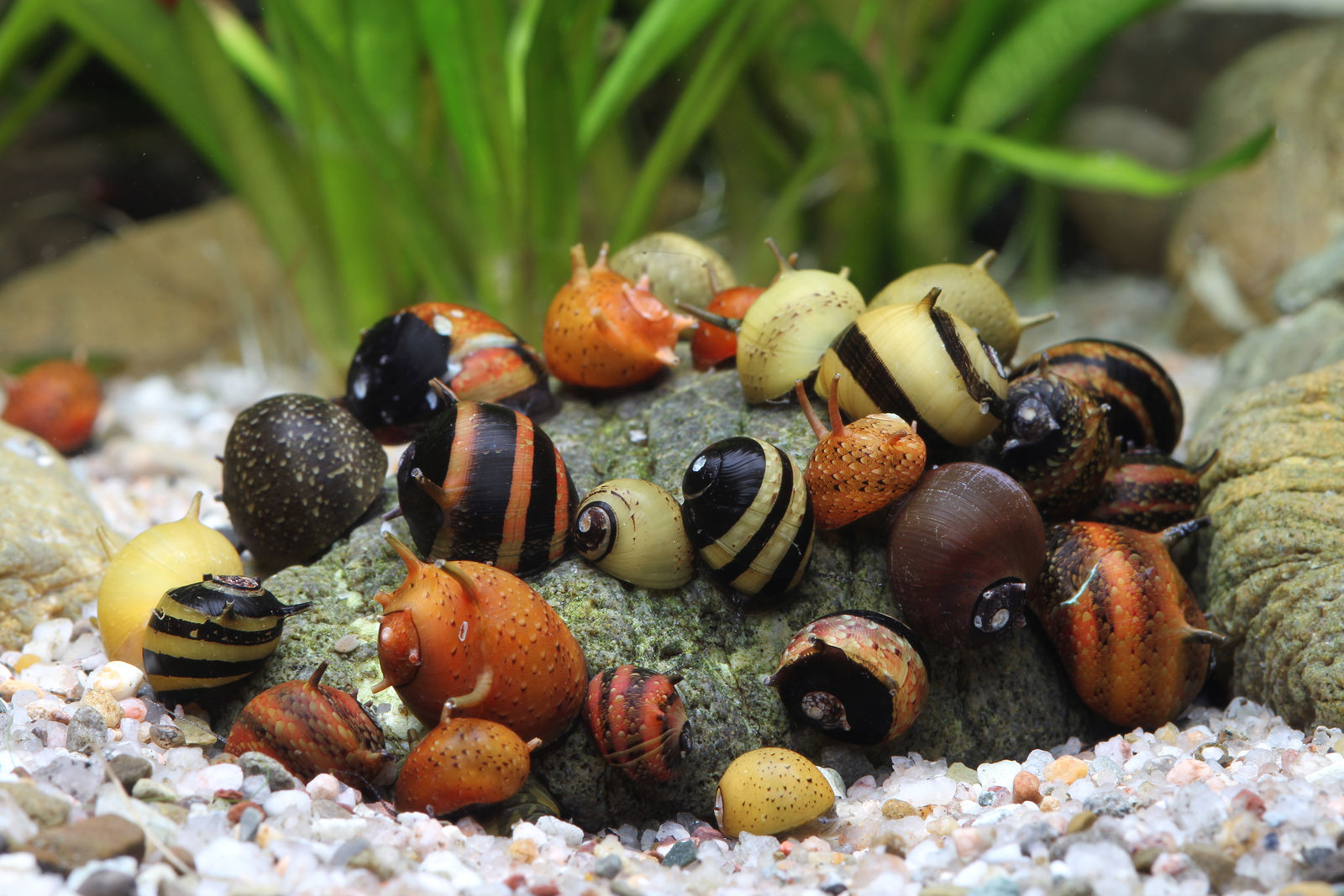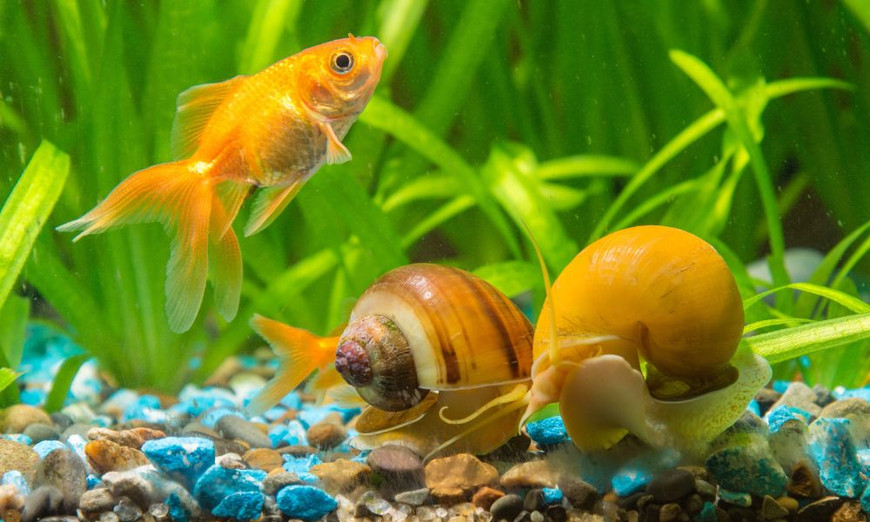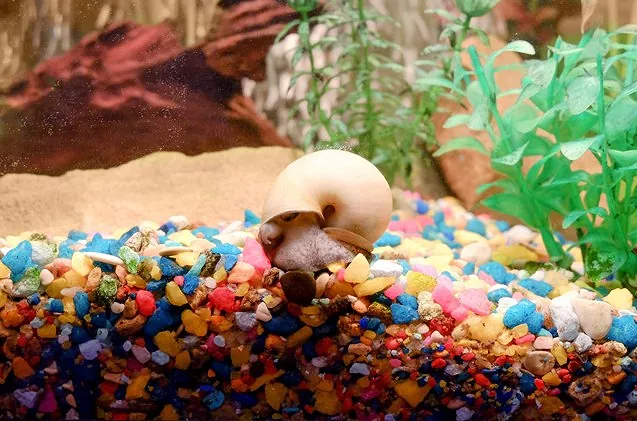Aquatic Knowledge
How to Get Rid of Pest Snails in Aquarium: A Complete Guide
Pest snails can quickly become a nuisance in your aquarium if left unchecked. While snails can be beneficial to your tank by helping clean up algae, excess food, and debris, when their population gets out of control, they can become a real problem. The good news is, I’ve been there, and I’m here to help you learn how to get rid of pest snails in aquarium effectively and safely. Let’s dive into this comprehensive guide on managing those pesky snails so that your aquarium remains a healthy, thriving environment for your fish.
Understanding Pest Snails in Your Aquarium
Before we jump into the solutions, it’s important to understand what pest snails are and why they’ve become a problem in your aquarium. Pest snails often come in as hitchhikers on live plants, decorations, or even on fish from other tanks. Common species include bladder snails, pond snails, and ramshorn snails. These snails reproduce quickly, leading to an infestation before you even realize it.
The Problem with Pest Snails
While a few snails can benefit your tank by cleaning up, too many of them can lead to:
- Overpopulation: Pest snails reproduce rapidly, leading to an explosion of their population.
- Competing for Resources: They compete with your fish for food and may also damage plants.
- Water Quality Issues: Too many snails can increase waste in your tank, leading to water quality problems.
Causes of Snail Infestations

Understanding the causes of snail infestations can help prevent future problems and control current ones.
Introduction through New Plants and Fish: Snails and their eggs often hitch a ride into your aquarium on new plants, fish, or decorations. This is a common way for infestations to start.
Overfeeding: Providing more food than your fish can consume leads to leftovers that snails feed on, encouraging their population growth. Overfeeding is a primary cause of snail proliferation in aquariums.
Poor Tank Maintenance: Infrequent water changes and inadequate cleaning create conditions that support snail growth. Debris and waste build-up provide snails with ample food and hiding places.
Quarantining New Plants and Fish: Always quarantine new plants and fish before adding them to your main tank. This practice helps identify and remove any hitchhiking snails or eggs, preventing them from entering your aquarium.
Proper Feeding Practices: Avoid overfeeding your fish. Provide only what they can consume in a few minutes to minimize leftover food that snails can feed on. Controlled feeding helps reduce the food supply for snails.
Regular Tank Maintenance: Maintain a consistent cleaning schedule, including regular water changes and substrate vacuuming, to reduce snail-friendly conditions. Clean tanks are less likely to experience snail infestations.
How to Get Rid of Pest Snails in Aquarium

Now that we know the basics, let’s dive into how you can get rid of pest snails in aquarium without harming your fish or plants. There are multiple methods you can try, and I’ll cover them all here.
Manual Removal
One of the simplest ways to start tackling a snail problem is through manual removal.
- Spotting the Snails: Regularly inspect your tank, plants, and decorations. You’ll often find snails attached to glass walls or hiding in the substrate.
- Siphoning: During water changes, use a siphon to suck up snails hiding in the gravel or substrate.
- Snail Traps: You can make or buy snail traps that lure the snails in. Placing a piece of lettuce or cucumber in the tank overnight often works. Snails will gather on it, and you can easily remove them in the morning.
Reduce Feeding
Overfeeding is one of the main reasons for snail infestations, as leftover food fuels their reproduction.
- Control Portions: Be sure not to overfeed your fish. Only feed what they can consume within a few minutes.
- Remove Excess Food: After feeding, remove any uneaten food within 10 minutes to prevent it from becoming snail food.
Introduce Snail-Eating Fish
Certain species of fish and other aquatic creatures naturally prey on snails. This can be a great way to control the snail population without using chemicals.
- Popular Snail-Eating Fish: Loaches, such as the Clown Loach and Yoyo Loach, are great at devouring pest snails. Bettas, dwarf pufferfish, and some species of cichlids also have an appetite for snails.
- Crustaceans: Assassin snails (Clea helena) are another option—they specifically target and eat other snails without becoming a pest themselves.
Use Chemical Treatments (With Caution)
If manual removal and natural predators aren’t cutting it, you can use chemical treatments to eliminate pest snails. However, be careful with this method.
- Copper-Based Solutions: Many snail-killing products contain copper, which is effective against snails but can be harmful to your fish, plants, and other invertebrates.
- Follow Instructions: Always follow the product’s instructions carefully. Overuse of chemicals can disturb the entire ecosystem of your tank.
- Quarantine Plants and Decorations: If you suspect the snails came in through plants or decorations, consider giving them a chemical dip before adding them back to the aquarium.
Keep Your Aquarium Clean
Maintaining a clean tank is one of the best preventive measures against snail infestations.
- Regular Water Changes: Changing about 20-30% of the water in your tank weekly helps keep snail populations in check.
- Vacuum the Substrate: Snails often lay their eggs in the substrate. Use a gravel vacuum during water changes to suck up debris, snail eggs, and any hiding snails.
- Clean Decorations: Remove decorations and scrub off any visible snails or eggs. Doing this regularly will keep snails from multiplying unnoticed.
Maintaining a Snail-Free Aquarium

Ongoing Preventative Measures: Continue with regular maintenance, proper feeding, and quarantine procedures to prevent future infestations. Preventative care is crucial for long-term control of snail populations.
Regular Tank Inspections: Frequently inspect your tank for signs of snails and address any issues promptly. Early detection and action can prevent a minor issue from becoming a major infestation.
Consistent Cleaning Routine: Stick to a consistent cleaning routine to ensure your tank remains inhospitable to pest snails. Regular substrate vacuuming and water changes are essential practices.
Preventing Pest Snails from Entering Your Aquarium
The best way to avoid dealing with pest snails is to prevent them from entering your tank in the first place.
Inspect New Plants and Fish
Before introducing anything new into your tank, be sure to inspect it thoroughly.
- Check Plants: Live plants are the most common way pest snails are introduced. Rinse them well before adding them to your aquarium.
- Quarantine: Set up a quarantine tank for new plants or fish. Keep them in quarantine for a week or two to ensure no snails or eggs are hitchhiking.
Use a Chemical Dip for New Plants
Before placing new plants in your aquarium, dip them in a mild solution to kill any potential snails or eggs.
- Bleach Dip: Use a 1-part bleach to 19-parts water solution for a short dip (about 2 minutes), then rinse thoroughly.
- Potassium Permanganate: Another option is to use potassium permanganate, a safer option for killing snails without damaging plants.
Regular Tank Inspections
Make it a habit to inspect your tank regularly. Early detection of snails allows you to act before the problem becomes unmanageable.
Common Mistakes to Avoid
Over-reliance on Chemicals: Relying too heavily on chemical treatments can harm your tank’s ecosystem. Use chemicals as a last resort and follow instructions carefully.
Ignoring the Root Causes: Address the underlying causes of snail infestations, such as overfeeding and poor maintenance, to prevent recurrence. Understanding and correcting these issues is essential for long-term control.
Inadequate Quarantine Procedures: Always quarantine new plants and fish to avoid introducing snails into your main tank. Proper quarantine practices can prevent many infestations.
Benefits of Controlling Snail Populations

Healthier Aquarium Environment: Controlled snail populations contribute to a healthier and more balanced tank environment. Less waste and cleaner water create optimal conditions for your fish and plants.
Enhanced Aesthetic Appeal: Fewer snails mean a cleaner and more visually appealing aquarium. Aesthetically pleasing tanks are more enjoyable to observe and maintain.
Reduced Risk of Plant Damage: Minimizing snail numbers protects your live plants from potential damage. Healthy plants contribute to the overall well-being of your aquarium.
Conclusion
Dealing with pest snails in your aquarium can feel frustrating, but with the right approach, it’s entirely manageable. By manually removing snails, reducing overfeeding, introducing snail-eating fish, using chemical treatments cautiously, and maintaining a clean tank, you’ll be able to regain control of your aquarium. More importantly, by preventing snails from entering your tank in the first place, you can save yourself the hassle of dealing with an infestation. Remember, consistency is key, so stay diligent and enjoy your snail-free aquarium!
FAQs
1. How can I tell if my aquarium has a snail problem?
If you notice more snails each day, especially on glass, plants, and gravel, you likely have a pest snail issue.
2. Are there any fish that eat pest snails?
Yes! Loaches, bettas, and dwarf pufferfish are known for their ability to eat snails.
3. Is using chemicals to kill snails safe for my fish?
While chemical treatments can kill snails, they may also harm fish, plants, and other invertebrates if not used carefully.
4. Will snails harm my aquarium plants?
Some species of snails can harm plants by eating their leaves, but the real issue is overpopulation, which can lead to competition for nutrients.
5. Can I prevent snails from entering my tank in the first place?
Yes! Inspect new plants, quarantine new fish, and dip plants in a bleach or potassium permanganate solution before adding them to your tank.
